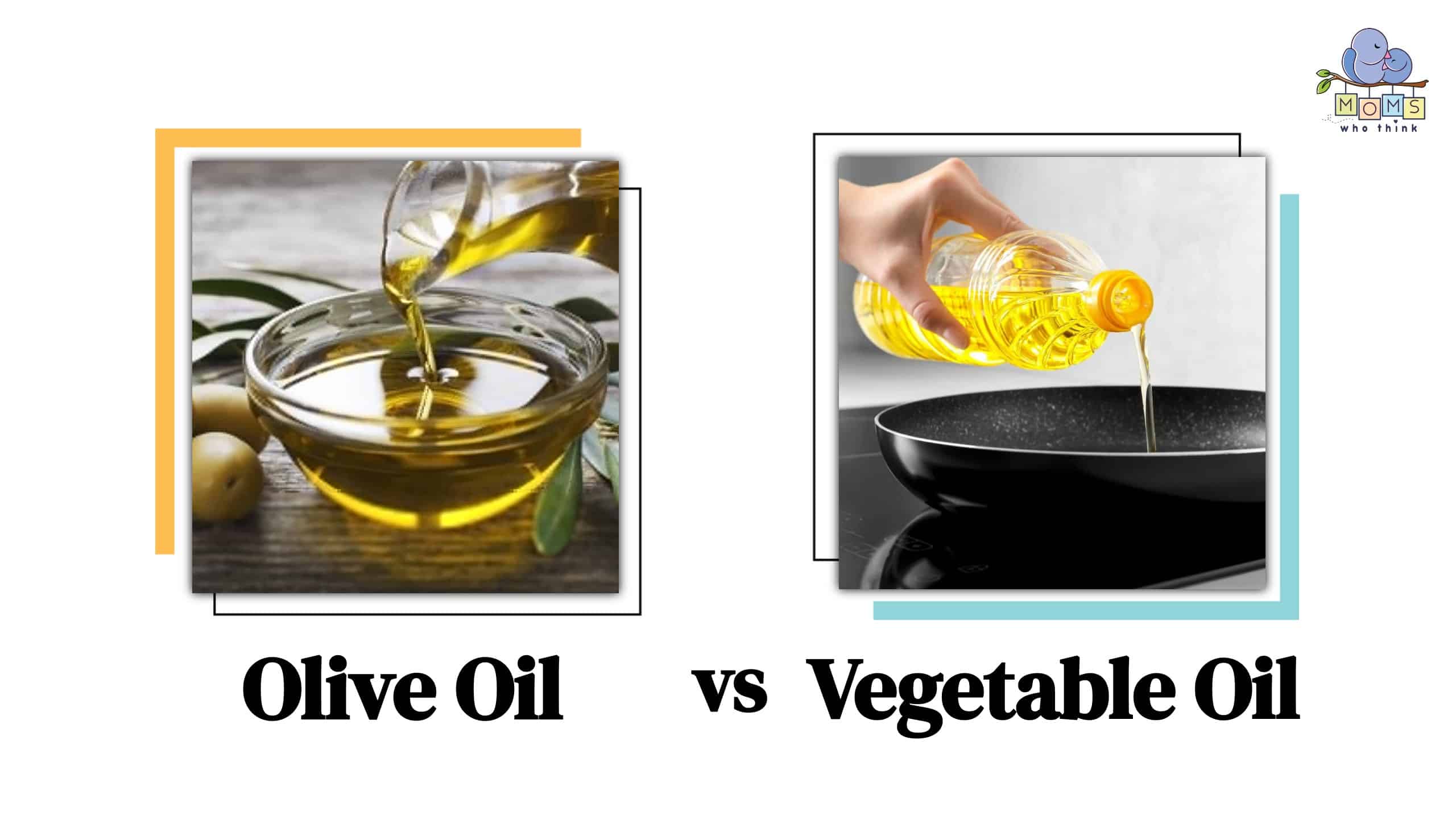Cooking oils are a necessity. You'll find them in every home in different forms and brands. When shopping for cooking oils, you are spoilt for choice due to the many types! Two popular ones are vegetable oil and olive oil. Vegetable oil is made by mixing oils from various sources like cottonseed, soybean, sunflower, corn, and canola. Olive oil comes from compressed olive fruits.
In this article, we'll compare both oils in-depth and examine their differences, calories, taste, processing, and more.
Vegetable Oil vs. Olive Oil: How Do They Compare?
As mentioned earlier, both oils are processed differently. Vegetable oil comes from plants (liquid plant-based fat), while olive oil comes from olive fruits. Another significant difference is the refining or processing. Vegetable oil is more processed to remove impurities. Though it is an excellent move, it removes all the healthy antioxidants, so people choose olive oil as the healthier version.
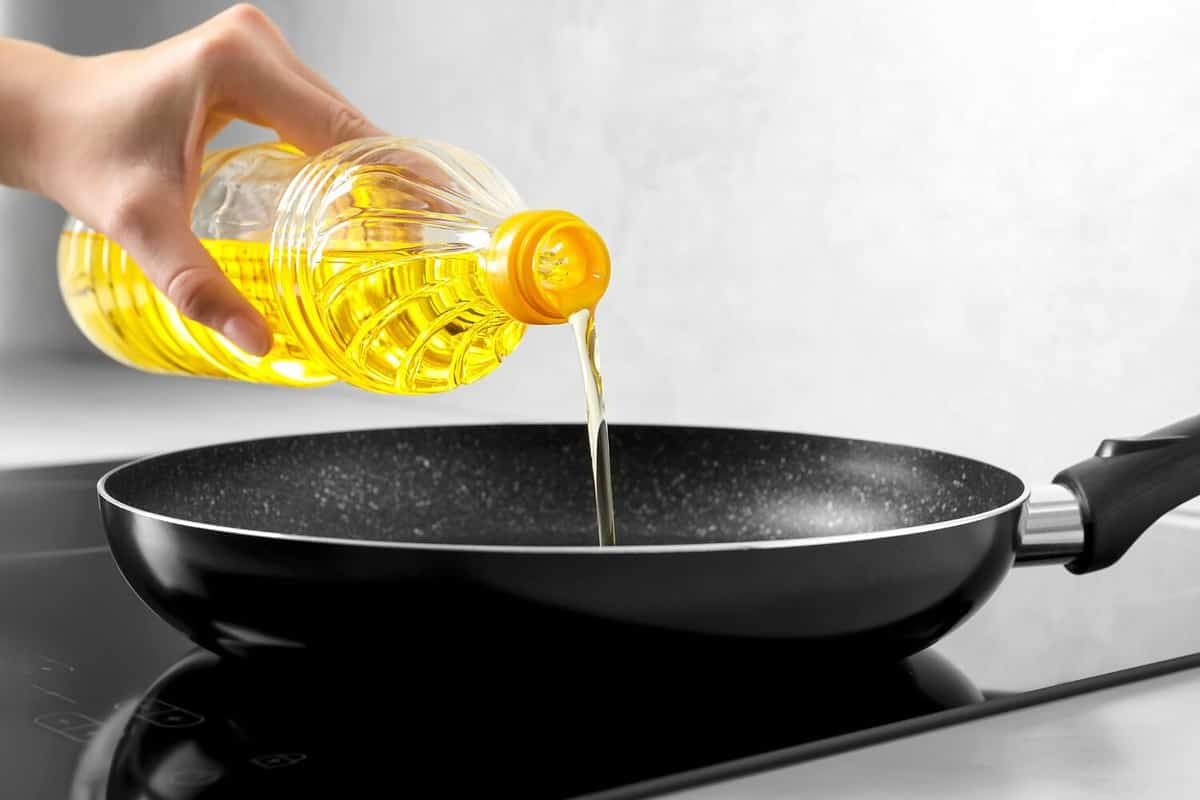
©New Africa/Shutterstock.com
On the other hand, olive oil comes in refined and non-refined forms. Note that the refined version isn't as processed as refined vegetable oil. Processing is the least on extra virgin olive oil and has the most healthy antioxidant and nutrient compounds.
When it comes to flavor, vegetable oil has a neutral taste. This is because of the impurity removal during processing that leaves it bland. Surprisingly, many prefer that taste to olive oil which is very distinct. The flavor depends on the kind of olive oil you use. The refined or light olive oils have a neutral to mild taste than the extra virgin type. However, they generally taste fruity, buttery, or herby with a strong fragrance.
Olive oil ranges from golden yellow to light green depending on the type and ripeness of the olive fruits. Vegetable oil is mostly golden yellow, which makes it easier to identify when buying.
When cooking or baking, it's essential to consider the oil's smoke point. When you cook oil past its smoking point, the product usually has a burnt, bitter and unpleasant taste. The smoke point of vegetable oils is higher than some olive oils. It usually is 400 degrees Fahrenheit, making it suitable for high-heat cooking. The refined olive oil and the non-refined, or extra virgin, have varying smoke points. The former range between 350 and 410 degrees, while the latter falls between 390 and 470 degrees. The refined kind can withstand high cooking temperatures, while the extra virgin does well with mild.
Vegetable Oil vs. Olive Oil: What is Their Nutritional Profile?
Due to extensive processing, vegetable oil has fewer nutrients than olive oil. But, we cannot dismiss the few traces of nutrients left, like the essential fatty acids. Vegetable oil has both kinds of unsaturated fats, i.e., PUFA and MUFA. This combination makes it better than butter and margarine as it lowers the risk of heart disease.
The Omega-3 and -6 acids are pretty good for the body. However, the levels in vegetable oil are not the best as they go past the recommended ratio. The ideal ratio for Omega-6 to Omega-3 fatty acids is 2:1. Still, vegetable liquid fat has them in the proportion of 20:1. This balance can lead to chronic diseases like heart disease, arthritis, cancer, and inflammation unless taken in moderation. On the positive side, the oil has vitamin E, which is also good for the body.
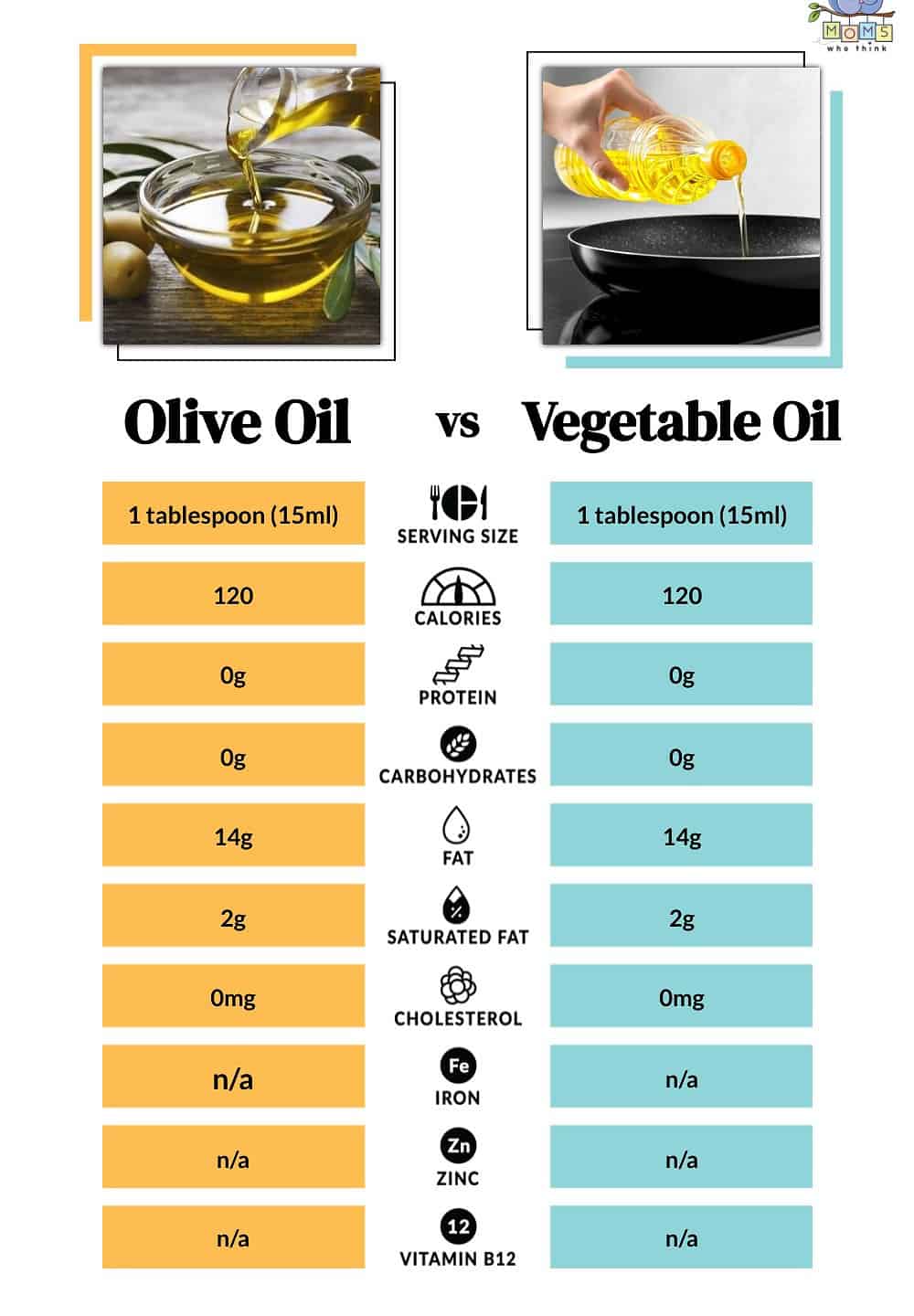
©
Olive oil undergoes little to no processing hence the high nutrient level. It contains healthy antioxidants that reduce the risk of diabetes, inflammation, cardiovascular diseases, etc. The oil has several fatty acids, the main being oleic acid. It's monosaturated and minimizes inflammation, cholesterol levels, high blood pressure, and some diseases.
For additional health benefits, olive oil has bioactive compounds rich in phytosterols and phenols. These components have antimicrobial and anti-inflammatory properties. If you want the most benefits from olive oil, go for the extra virgin type. It's the healthiest, with the most nutrients.
Vegetable Oil vs Olive Oil: Which One is Better Healthwise?
Of course, both oils suit their functions. Although there are only a few nutritional differences, vegetable oil and olive oil have almost an equal percentage of calories. In terms of calories, it is beneficial to consume both in moderation for good health. However olive oil has been through less processing, which means that it contains more nutrients than vegetable oil. Generally, if you want to eat healthily, it is advisable to choose the latter.
What is Vegetable Oil?
Vegetable oils refer to plant-based oils made from various sources such as peanuts, soybeans, corn, and sunflowers. They are regarded as a healthier option compared to animal fats because they contain lower levels of saturated fat than butter, lard, and other animal fats while possessing higher levels of unsaturated fat. Safflower and sunflower oils are examples of commonly used vegetable oils during cooking and baking such as making cakes and pastries. Vegetable oil is also suitable for pie crusts instead of butter or lard because it's less greasy in texture compared to these other fats. To maintain taste consistency in baking goods when using vegetable oil for the recipe, make sure to choose an oil with a neutral flavor.
Types of Vegetable Oil
Essentially vegetable oils are grouped into three types: cooking oils, salad dressings, and margarine/spreads, each having unique properties. There exist many different types within each classification, with these differences coming from their smoke point levels, among other factors. Smoke points refer to the temperature required before the oil begins burning or smoking up your kitchen easily; therefore higher smoke points oils such as safflower seed and soybean provide better outcomes, while low smoke point ones like corn and peanut have limitations when exposed to similarly high-temperature conditions.
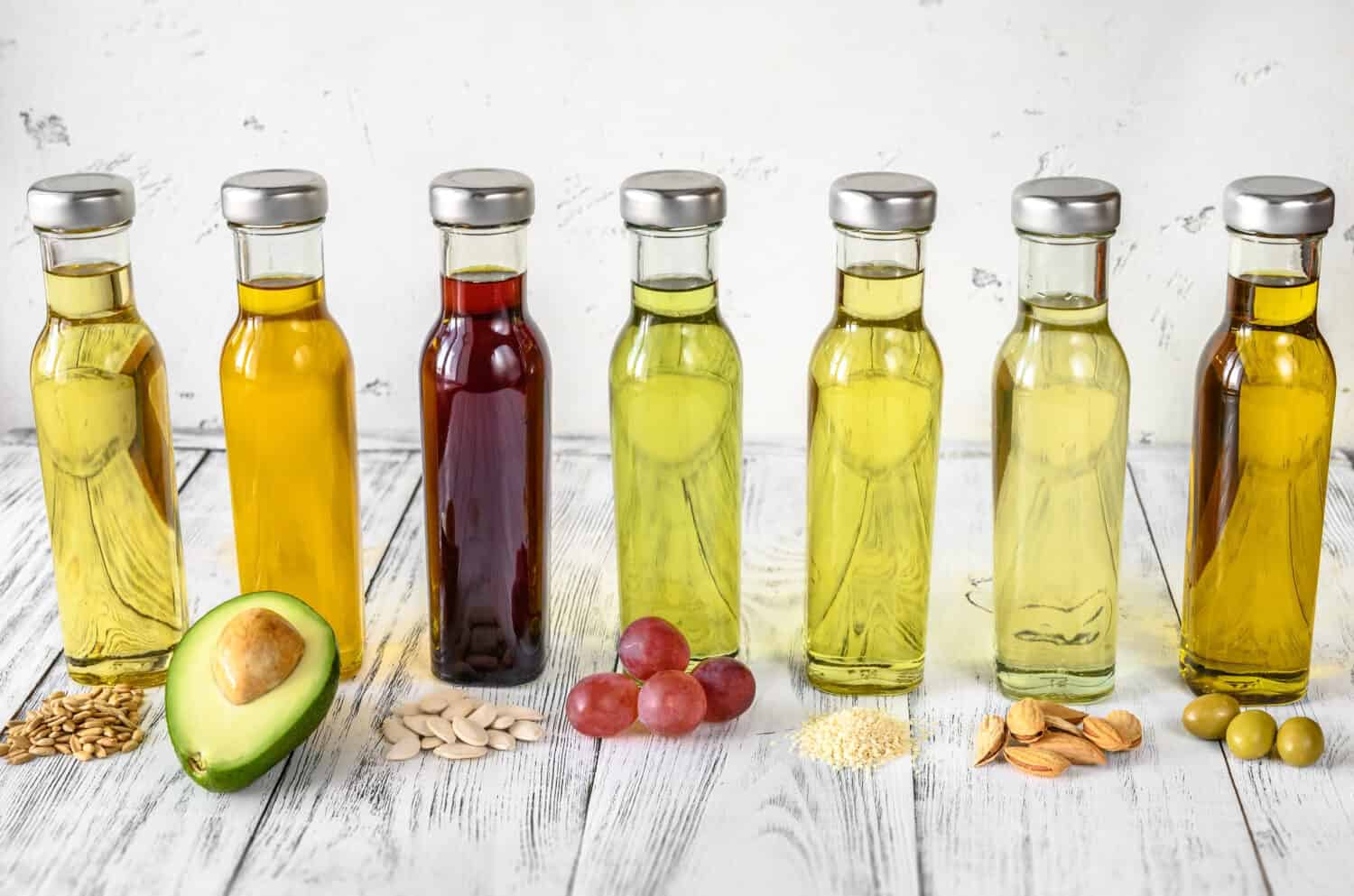
©Alexander Prokopenko/Shutterstock.com
Generally, it's oil made from plants. Most contain soybean oil, but you can find any liquid plant oil like canola, corn, or cottonseed. If you are looking for cheap oil for baking, vegetable oil should be your first choice. It's one of the cheapest oils in the market unless you want cold-pressed or unrefined options. These are a bit expensive because of their better quality. The oil is often golden yellow and has a neutral flavor which makes it suitable for baked goods without changing their taste.
What is Olive Oil?
Olive oil is a fat obtained from the olive, a traditional tree crop of the Mediterranean Basin. The oil is produced by pressing whole olives and it is commonly used in cooking, whether for frying, baking, or as a salad dressing. It is also used in cosmetics, pharmaceuticals, and soaps and as a fuel for traditional oil lamps.
The main types of olive oil are extra virgin and virgin. Extra virgin olive oil is made from the first pressing of olives. It has a more pungent flavor than other types of olive oil, but it also has greater amounts of antioxidants and phenols, which have anti-inflammatory properties. Virgin olive oil is made from the second pressing of olives, meaning it has less flavor than extra virgin but still contains many health benefits. Olive oil can also be blended with different oils or infused with herbs or garlic for added flavor and nutrition.
Due to minimal processing, olive oil has plenty of nutrients and antioxidants, which are helpful to the body. It has a distinct flavor, herby or grassy, with a color ranging from light yellow to light or dark green.
Olive oil is made up of mostly monounsaturated fat and contains more antioxidants than any other food on earth. It is also high in vitamin E, which helps prevent heart disease and cancer, as well as lutein and zeaxanthin, nutrients that protect your eyes from age-related blindness.
Vegetable Oil vs Olive Oil in Baking
Baking is a popular activity in and outside homes. You want to use the best oil for baked goods to get them looking and tasting great. Olive oil is pretty versatile, and you can use it for anything. You can fix it in your baking recipe but beware of its strong taste. It brings a new aroma to your products, and it is also a healthier version of cooking oil. However, some baked items can pass with olive oil, while some can't.
Examples include desserts like brownies, chocolate chip cookies, etc., which would taste different if you used olive oil. The baking will still happen, and the goods be okay, but the taste will be more olives than chocolate. But olive oil is an excellent option if you want to enhance flavors like citrus in cakes.
Both vegetable and olive oil work for baking, but vegetable oil is the go-to choice for many, especially desserts, because of its neutral flavor. It doesn't alter the initial taste of the baked goods, so you enjoy flavors you know and are used to.
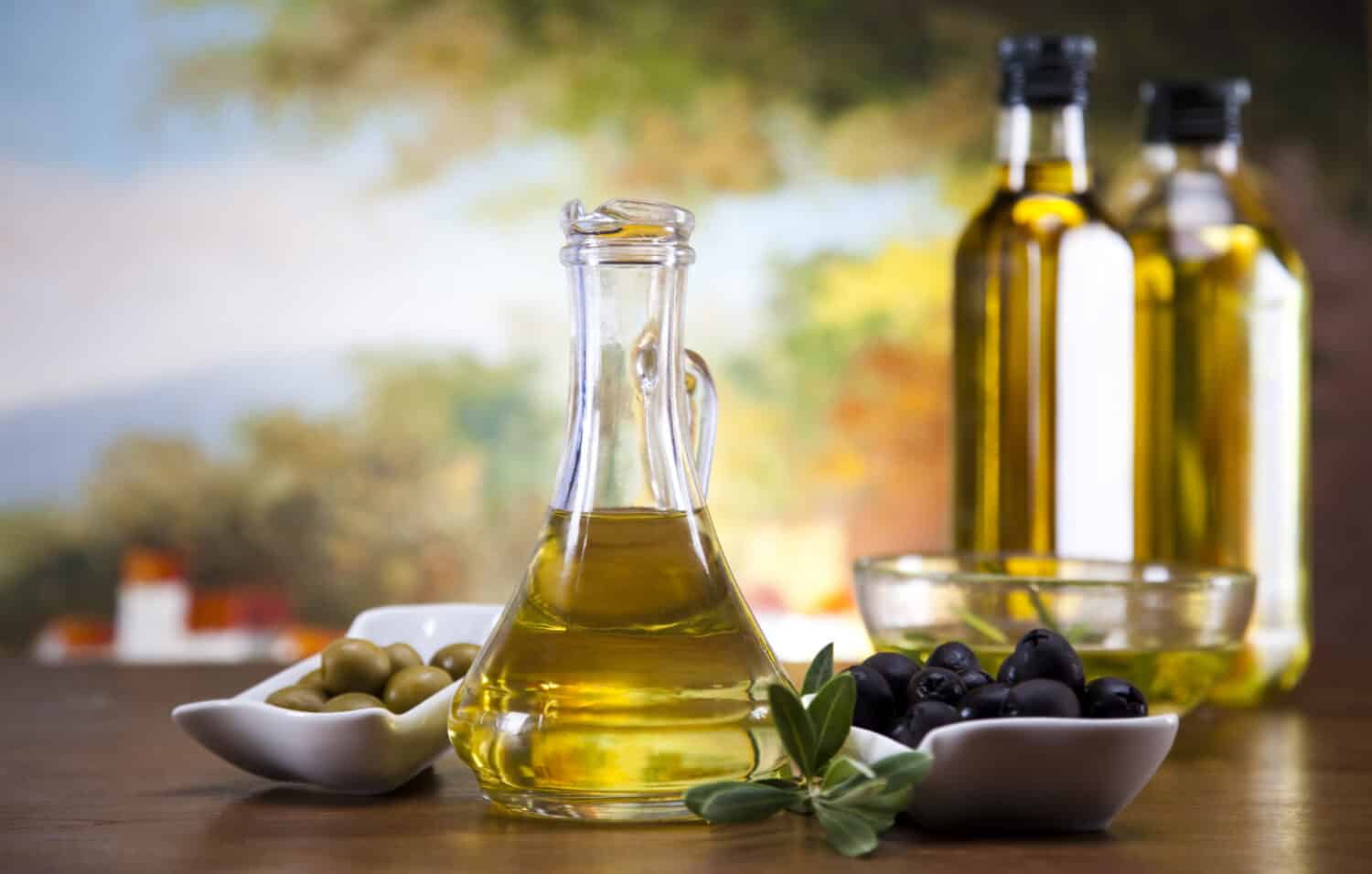
©Sebastian Duda/Shutterstock.com
It may be less healthy but it works well for all baked items. Its affordability also makes it people's favorite, especially commercial bakers who cannot spend much on high-quality cooking oils. Its non-existent taste helps you focus on your product's flavor rather than battling an unfamiliar distinct taste of olive oil.
Incorporating vegetable oils into baked goods can significantly enhance their texture and appearance. Furthermore, the presence of fat in these oils helps to maintain moisture within the baked goods. Interestingly they can even be used as substitutes for butter or margarine. This is highly beneficial given that vegetable oils are low in saturated fat while high in unsaturated fats. Therefore, individuals who wish to limit their intake of saturated fats can still indulge in a slice of cake or cookie every now and then. On another note olive oil is not commonly used in large-scale baking since it can be relatively pricey compared to other vegetable oils.
For this reason, many are unfamiliar with it as a baking ingredient. Those who use it do so for one-time bakes to bring out the desired taste. Olive oil has an acquired taste, and if you can get used to it, you enjoy some healthy nutrients and antioxidants that vegetable oil lacks. Another option is to use light olive oils with a mild or neutral taste.
Substitutes for Vegetable Oil in Baking
There are a number of substitutes for vegetable oil in baking:
Many bakers opt for coconut oil as their top choice when they need a vegetable oil substitute because of its mild flavor profile and high smoke point. However, what makes this substance even more appealing is its suitability for those with dietary restrictions or allergies since it's both gluten-free and vegan-friendly by nature.
Despite being an excellent all-rounder that works well in most recipes calling for vegetable oils, there are exceptions where you might need something specific. Like using butter instead of margarine or shortening when replacing fats altogether, while maintaining consistency across items such as cookies or muffins.
Olive oils have less saturated fat than vegetable oils do while offering unique flavors that work best with certain baked goods like Mediterranean-style pastries including focaccia breads, rather than delicate desserts like cakes or cupcakes.
Canola oil is another popular substitute made from rapeseeds whose neutral taste goes well with several traditional baked goodies without tampering much with the original recipe's texture or flavor; plus pricing-wise, it's more economical as compared to other oils in the market.
Substitutes for Olive Oil in Baking
Olive oil is a popular ingredient in baking. It can be used for so many things, including making cakes and cookies, as well as for frying, sautéing, and marinating. But what if you don't have olive oil on hand?
Here are some substitutes for olive oil in your next batch of homemade treats:
If you're looking for a budget-friendly and plant-based alternative to olive oil, vegetable oils like corn, canola, and sunflower oil can be relied upon. These oils contain similar fats to olive oil but are more affordable.

©Camera Chemistry/Shutterstock.com
Buttermilk might not seem like the most obvious option for a substitute but it works great nonetheless! It has lactic acid that helps baked goods rise during the process of baking.
For those looking for a new flavor profile, coconut oil makes for an excellent choice. It imparts a subtle flavor to your baked goods which are quite inviting to many palettes. With this oil, choosing between refined or unrefined variants depends on your preference for taste intensity.
Lard has its own unique characteristics adding richness in taste and texture but its strong flavor might not suit everyone's liking since it's greater than olive oil’s flavor profile. Keep in mind lard uses less quantity compared to other fats like butter or margarine.
Finally, if you're making cookies or high-fat-content cakes such as chocolate chip cookies or batter cake, canola oil will keep things tasty without burning easily due to its high smoke point. You can also pick corn or safflower oil since they share similar characteristics with canola oil suited well in items such as muffins, bar cookies along with quick breads where the heat is on!
Next time you run out of olive oil while baking from home; do not worry, as there are plenty of reliable substitutes listed above that could come in handy while keeping your delicious recipe up to par!
Conclusion
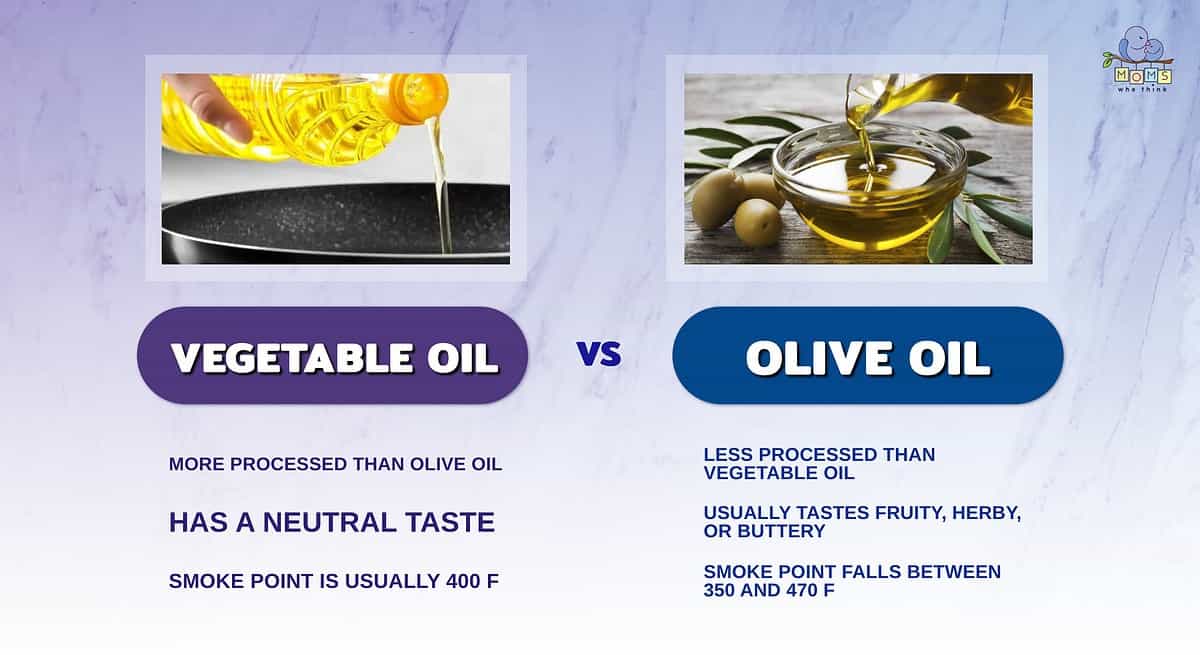
- Vegetable oil is more processed than olive oil; this removes many of the nutrients it contains. For this reason, many consider olive oil the healthier option.
- Olive oil can have a taste that falls on the more neutral side, but it usually tastes fruity, herby, or buttery.
- Vegetable oil has a fairly consistent smoke point, usually falling at or around 400 F. Meanwhile, the smoke point of olive oil can vary depending on the type you're using. Typically, the smoke point of olive oil falls between 350 and 470 F.
If you want good oil options for baking, go for vegetable or olive oil. They are similar in that they are both plant-based yet different in several ways. Vegetable oil is more prevalent in baking, but others prefer olive oil for its great nutritional profile. The latter has a solid grassy flavor, while vegetable oil is neutral and more taste friendly. Either way, both are great ingredients, and it depends on the flavor you want for your baked goods.
Use vegetable oil in this cranberry nut bread:
PrintCranberry Nut Bread with Vegetable Oil
Ingredients
- 2 cups all-purpose flour
- 3/4 cup white sugar
- 3/4 teaspoon salt
- 1 1/2 teaspoons baking powder
- 1/2 teaspoon baking soda
- 1 cup chopped cranberries
- 1/2 cup chopped walnuts
- 1 egg
- 2 Tablespoons vegetable oil
- 3/4 cup orange juice
- 1 Tablespoon orange zest
Instructions
- Preheat oven to 350 degrees F (175 degrees C). Grease a 9×5 inch loaf pan.
- Combine the flour, sugar, salt, baking powder, and baking soda.
- Add the cranberries and walnuts, and stir to coat with flour.
- Mix together the egg, oil, orange juice, and orange zest.
- Pour the egg mixture into the flour mixture, and stir until just blended.
- Spoon the batter into the prepared pan.
- Bake for 50 minutes in the preheated oven, or until a toothpick inserted near the center comes out clean. Cool in pan for 10 minutes, then remove to a wire rack, and cool completely.
